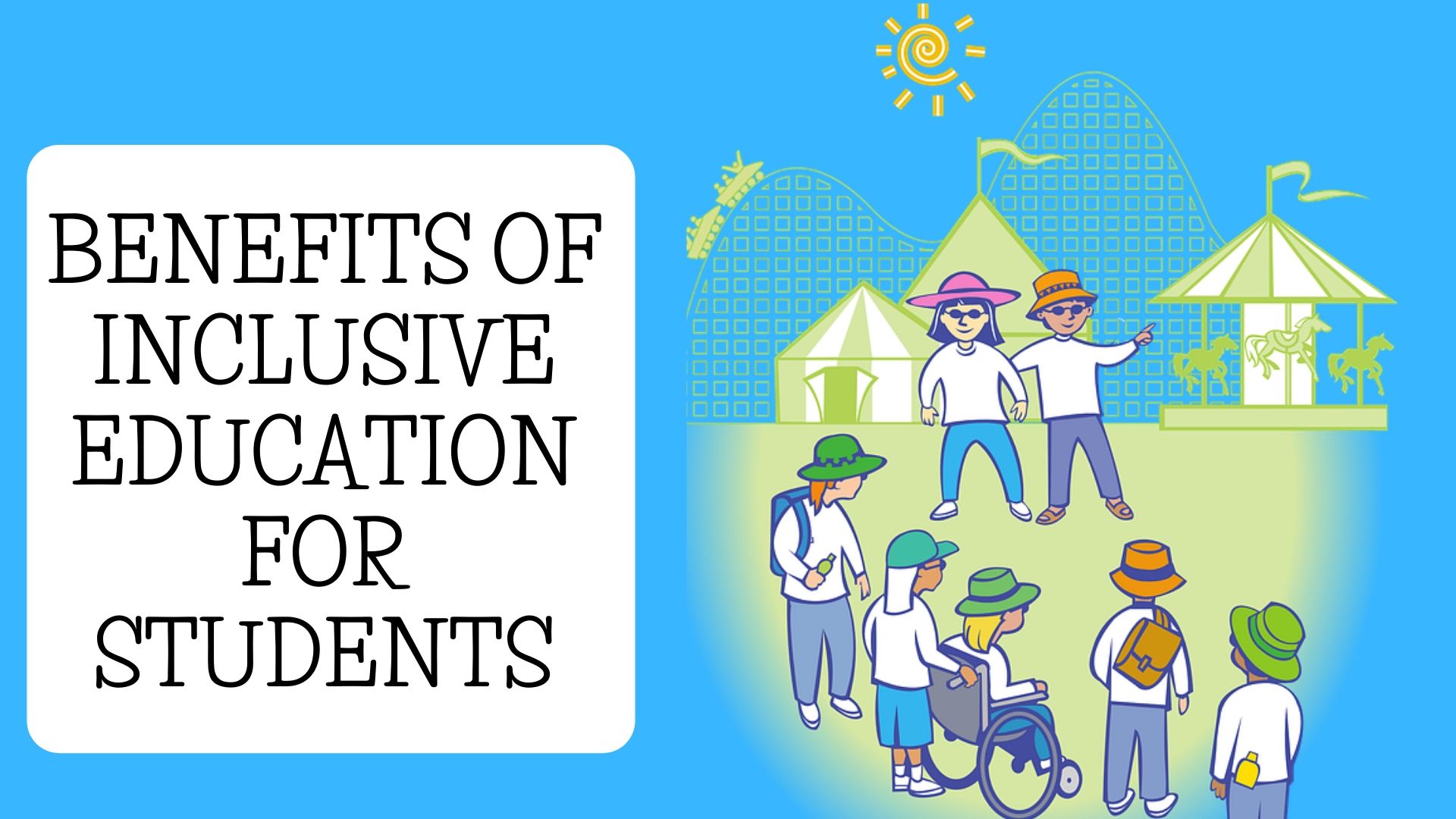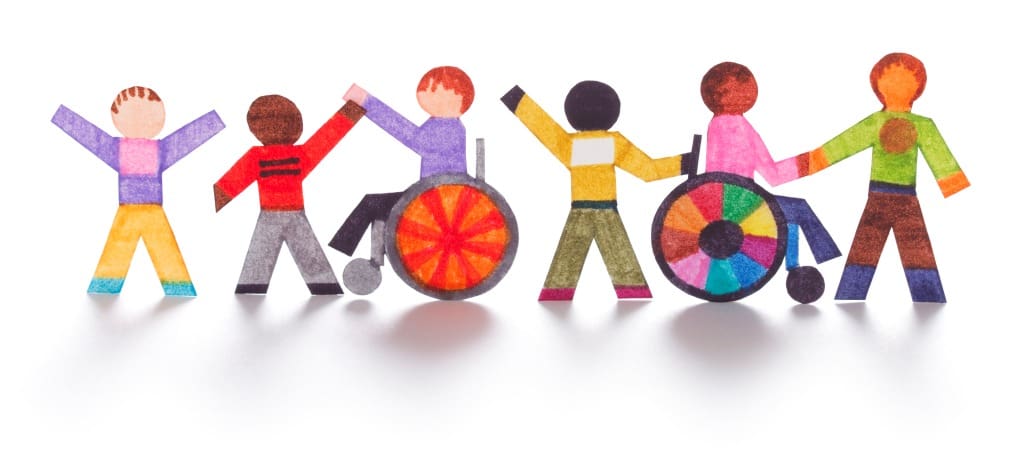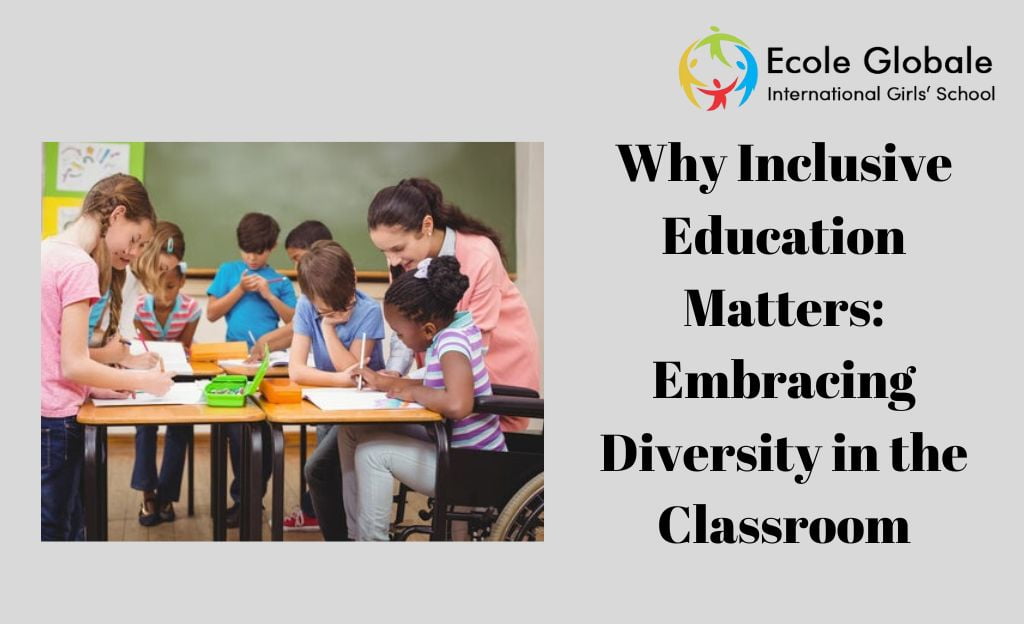Inclusive education is a way of teaching that recognizes student diversity, builds upon student strengths, and offers ways for students to reach their goals. It includes a wide range of approaches that permit students with and without special needs to learn together as much as possible.
Diversity is something that a lot of schools and parents emphasize. Inclusive education takes the concept of diversity one step further by making the classroom a place where anyone can learn regardless of their disabilities, cultural or socio-economic backgrounds, sexual orientation, or gender identity.
Importance of inclusive education in society
As per research conducted by the Best Boarding Schools in India, Inclusive education is the practice of making educational environments accessible for all students. Inclusive education is based on the belief that all children are capable of learning and being successful in school. It ensures that all students have access to quality education regardless of their differences or disabilities.
The world has changed drastically over the last century concerning diversity. Many countries now have people from different races, ethnicities, religions, and cultures living amongst one another in harmony. The world has also become more interconnected than ever through technology and globalization bringing people closer together regardless of where they live or what language they speak. Classrooms should reflect and embrace this diversity to better prepare students for life after graduation.
Inclusive education aims to provide equal opportunities for all students regardless of race, gender, ethnicity, or ability level so that everyone can learn from each other’s experiences and backgrounds. Students who feel included in their learning environment tend to do better academically because they feel valued by their peers and teachers who encourage them.
Benefits of Inclusive Education For Students

Research shows that inclusive education can positively impact the academic performance and social skills of all students involved in inclusive programs.
Social benefits
Another survey done by Top Schools In India shows that Inclusive education is growing in popularity because it has been proven to increase academic achievement for all students. It also helps boost self-esteem and confidence in students who struggled in school before they were enrolled in inclusive programs.
Inclusive education is one of the most important issues facing our society today.
Inclusive education can help increase equality for all people, including those with disabilities. It provides children with disabilities the opportunity to experience success in school by being able to use their strengths and overcome their challenges.
Students feel more included when they are exposed to other students with disabilities. It helps them develop empathy and compassion for others who may be different. By including these students in their classroom, teachers can teach students how to interact with others who may have different abilities or needs. It teaches students how to better communicate with people from all walks of life, which will help them become more successful adults later on in life.
Educational benefits
Inclusive education is practiced in many different forms around the world. Some schools have adopted an inclusive model of teaching called “differentiated instruction,” which focuses on tailoring instruction to meet the particular needs of individual students. This method requires teachers to take into account the strengths and weaknesses of each student to challenge them appropriately. At other schools, teachers may use a modified curriculum that allows all students to participate in lessons at a level appropriate for them. This approach helps children feel more connected to their peers while giving them opportunities to succeed academically without feeling overwhelmed by complex material they do not understand yet or are unable to grasp at such an early stage in their learning process.
Benefits for students with disabilities
Inclusive education offers opportunities for all students to learn from each other and build relationships. Students with disabilities may have unique perspectives on topics that their classmates don’t know about yet. These perspectives can be extremely valuable during discussions or projects where everyone contributes their ideas. In addition, having students with different backgrounds enables teachers to understand how people think and behave in different situations. This knowledge helps teachers create a curriculum that meets individual needs while teaching students how to interact with others from different backgrounds and themselves.
Inclusive education allows students with disabilities to reach their full potential through education by giving them access to all of the same resources as other students so that they can learn alongside everyone else instead of being isolated from them.
Challenges in Implementing Inclusive Education

Attitudes and beliefs of educators
Teachers may also have negative stereotypes about students with special needs from personal experiences or stories told by others. We also need to be aware of our biases and prejudices when dealing with students different from us. It is easy to fall back on stereotypes. But they are often misleading and harmful — especially when they lead us to make assumptions about someone’s ability to learn or succeed in school based on their appearance or actions. For educators to help these students succeed, they need to be open-minded and willing to listen to them instead of assuming things about them without knowing anything about them.
Lack of resources and support
In some cases, teachers may lack the necessary training or experience in working with students with special needs; therefore, they may lack confidence in teaching these students effectively or even interacting with them on a personal level.
Teachers need more training on how to teach students with disabilities.
Access to assistive technology and accommodations
Students with disabilities may need these tools to complete assignments or participate in classroom activities. Some teachers may not have experience using these tools or may not have the resources to purchase them for their classrooms.
The cost of these devices can also be prohibitive for schools, especially when budgets are tight.
Strategies for Creating Inclusive Classrooms

Teacher training and professional development
If you’re looking for ways to incorporate more diversity into your teaching practices, one of the best places to start is with yourself. Many schools offer teacher training sessions on how best to create inclusive classrooms, while others provide workshops and seminars on how to support students from different backgrounds. Some states even require that teachers take part in these types of training as part of their licensure process.
Classroom accommodations and modifications
Classroom accommodations and modifications are strategies that can be used to support students with disabilities. These strategies may include physical accommodations, such as moving furniture around or adding ramps; sensory accommodations, such as providing a fidget toy or allowing students to leave their desks when they need a break; and academic accommodations, such as allowing students to take notes on paper instead of in class or giving extended time for assignments.
Inclusive classrooms are designed to be welcoming and supportive environments for all students. In doing so, they allow students with disabilities the opportunity to learn at their own pace without being singled out or stigmatized by their peers.
Collaborative team teaching and co-teaching
Team teaching and co-teaching are two different approaches that can help teachers create more inclusive classrooms. Team teaching is when two teachers teach together in one classroom — each on their subject matter — while co-teaching is when two teachers collaborate on both content areas and pedagogy.
Cooperative learning groups are used in many classrooms to engage students in meaningful activities and build relationships among students. They provide opportunities for students to learn from one another, teach others about their knowledge and skills, support each other’s learning, provide feedback to each other, help resolve conflicts among group members, develop leadership skills, and much more.
Conclusion
As a society, we are becoming more aware of the importance of diversity in schools, workplaces, and communities. The idea that everyone should be treated equally regardless of their background or gender identity is becoming more widely accepted as a goal for all schools to strive toward. A truly inclusive environment means that no one is left behind because they don’t fit into the “norm”.
For any queries related to parenting, schooling, or any student-related tips, click here to check out our latest blogs.






